










Vasa Ship Museum
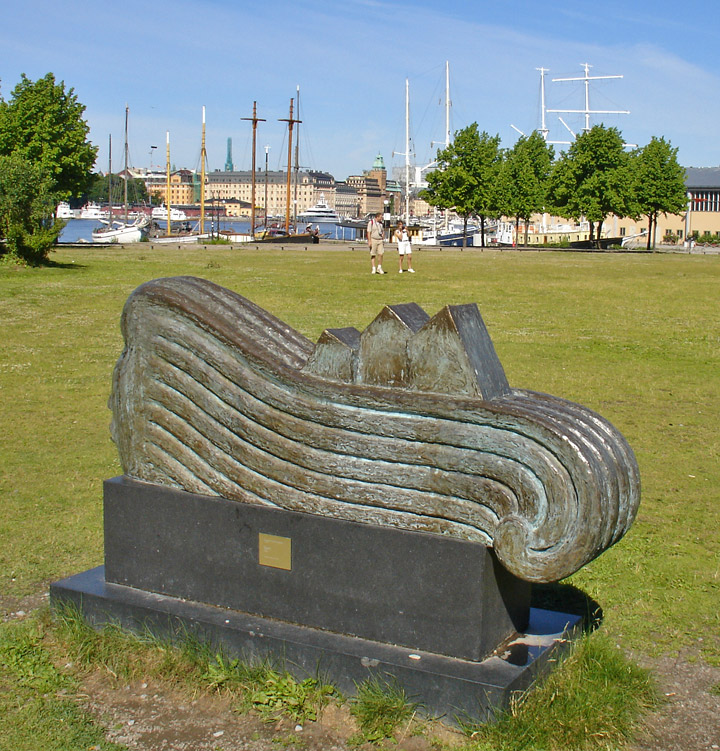
museum island
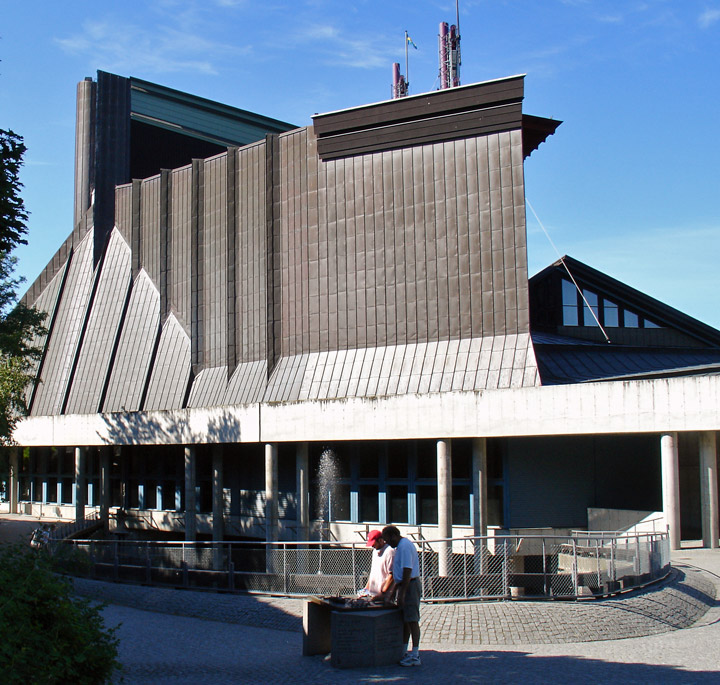
the museum
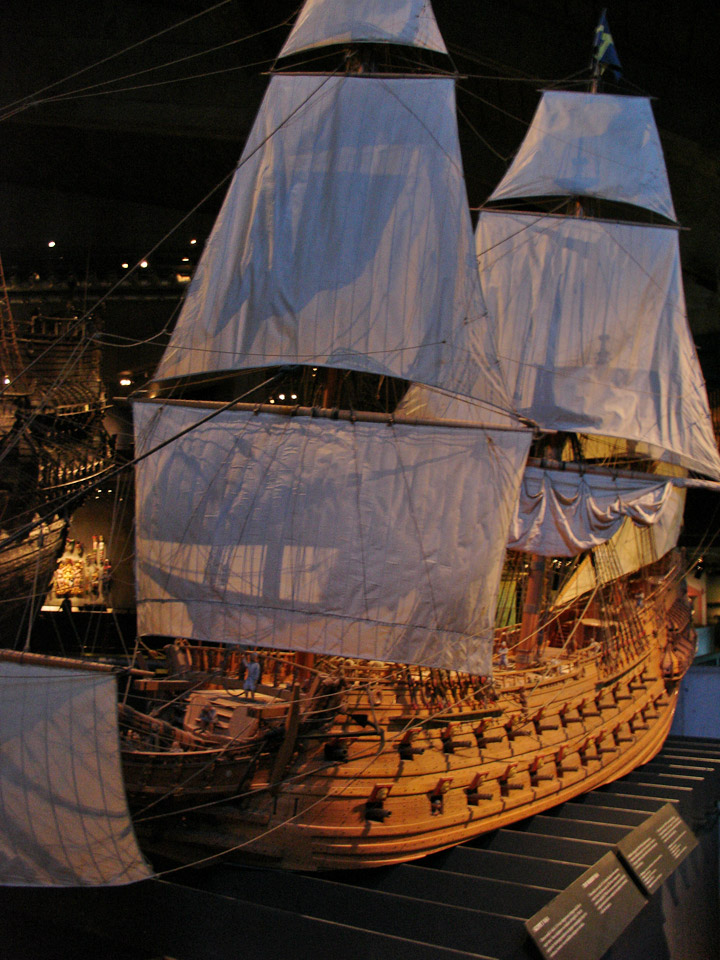
model of the Vasa
The
beautiful Swedish galleon Vasa, built by Dutch shipwrights for the King of
Sweden, sank tragically on its maiden voyage in Stockholm harbor in 1628. A wind
blew Vasa onto its side, allowing water to pour through the open gun ports. The
ship lay in the mud at the bottom of the harbor until the 1960s, when it was
resurrected and meticulously restored. Today the Vasa is the only surviving
galleon and Stockholm's most popular public exhibit.
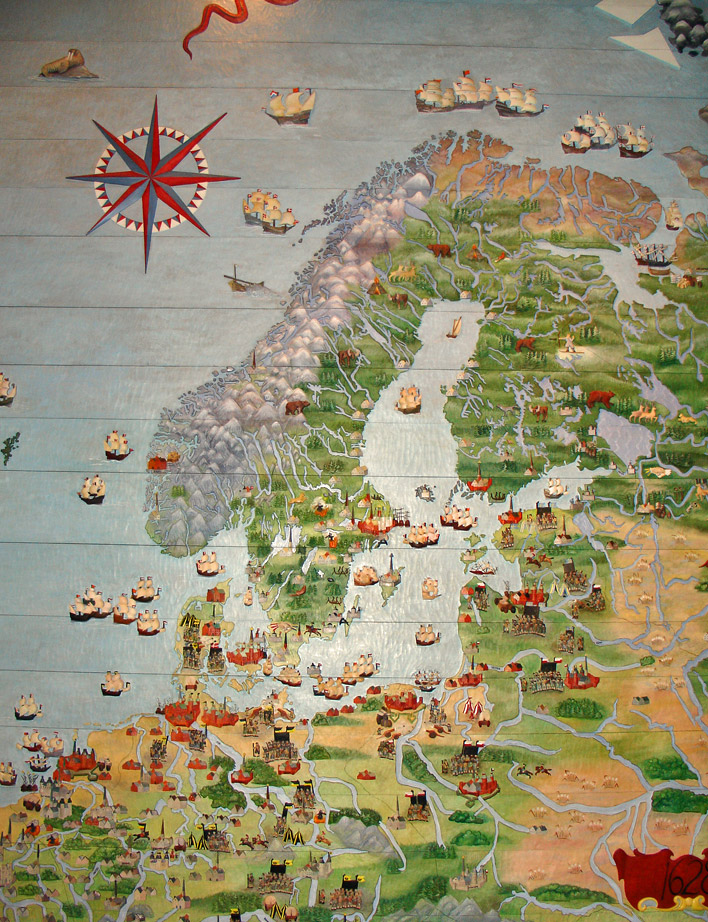
the Baltic
A great
Swedish king who ruled Scandinavia in the early 17th century had to have a fleet
of warships to patrol the Baltic and ordered 4 new galleons. One was to be the
royal mighty battle galleon called Vasa, greater than any ship ever built at
that time. The king himself dictated the Vasa's measurements and no one dared
argue against him. It was of the type we call skeleton-build.
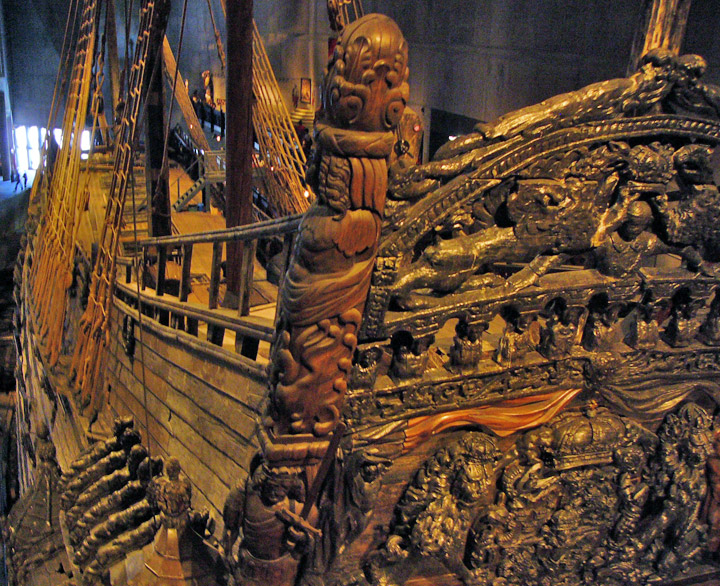
port side of the Vasa
It had two
gun decks and held 64 bronze cannons. Various woods were used but predominantly
northern oak – a very sturdy wood. It is said that a total of 40 acres (16 ha)
of timber was used. Timbers of the bow were steamed (to curve them) and fixed
and the close-set ribs were clad with heavy timber walls – a masterpiece of
triple-laminated oaken walls 18" (46 cm) thick.
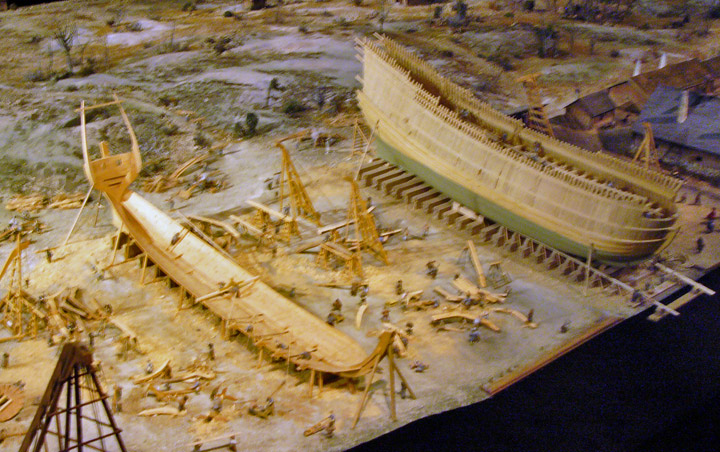
model of the shipyard
A web of
masts and spars rose slowly. The top gallant on the main mast soared to 190 ft
(57 m). The Vasa's rudder stood over 30 feet tall.

bow carving
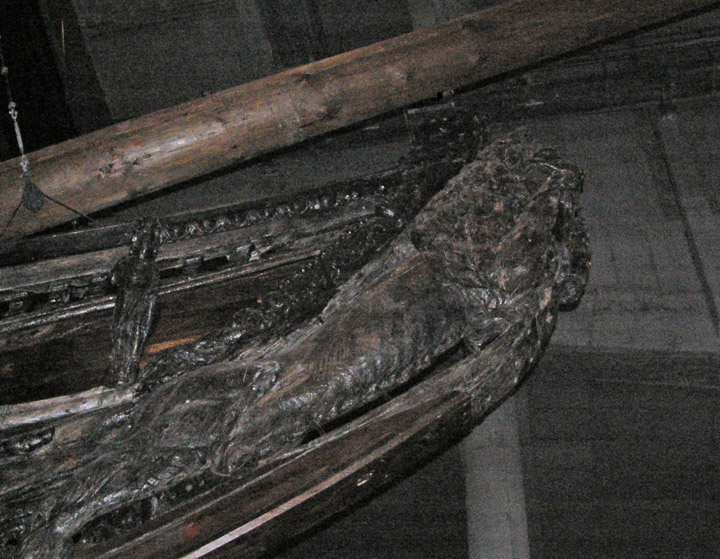
as attached
Carvings were
made separately in workshops. Later these were attached on the bow and round the
high stern castle.
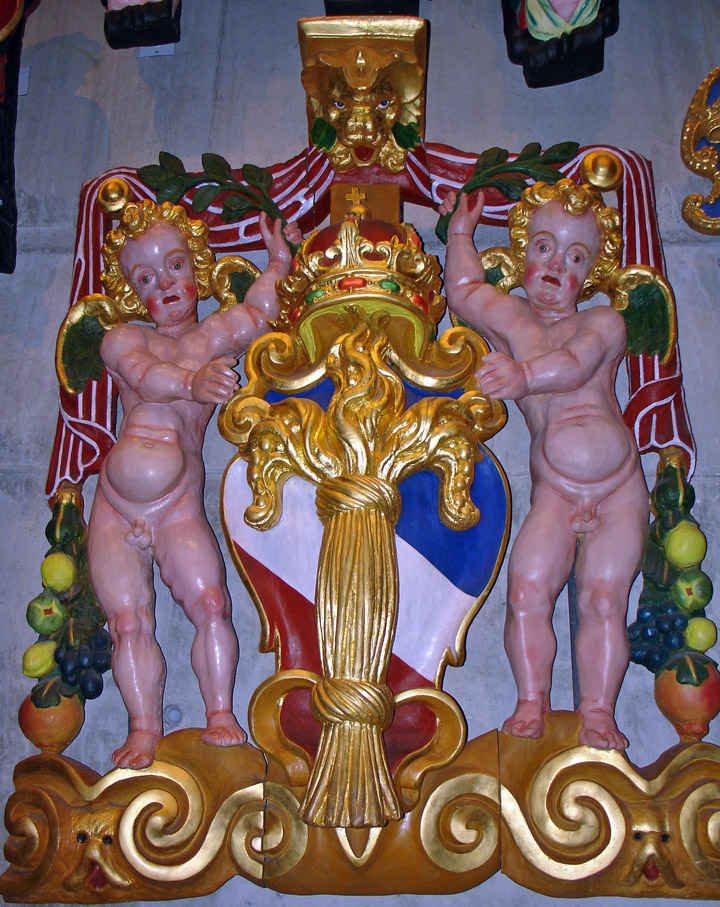
stern panel

its place on the stern
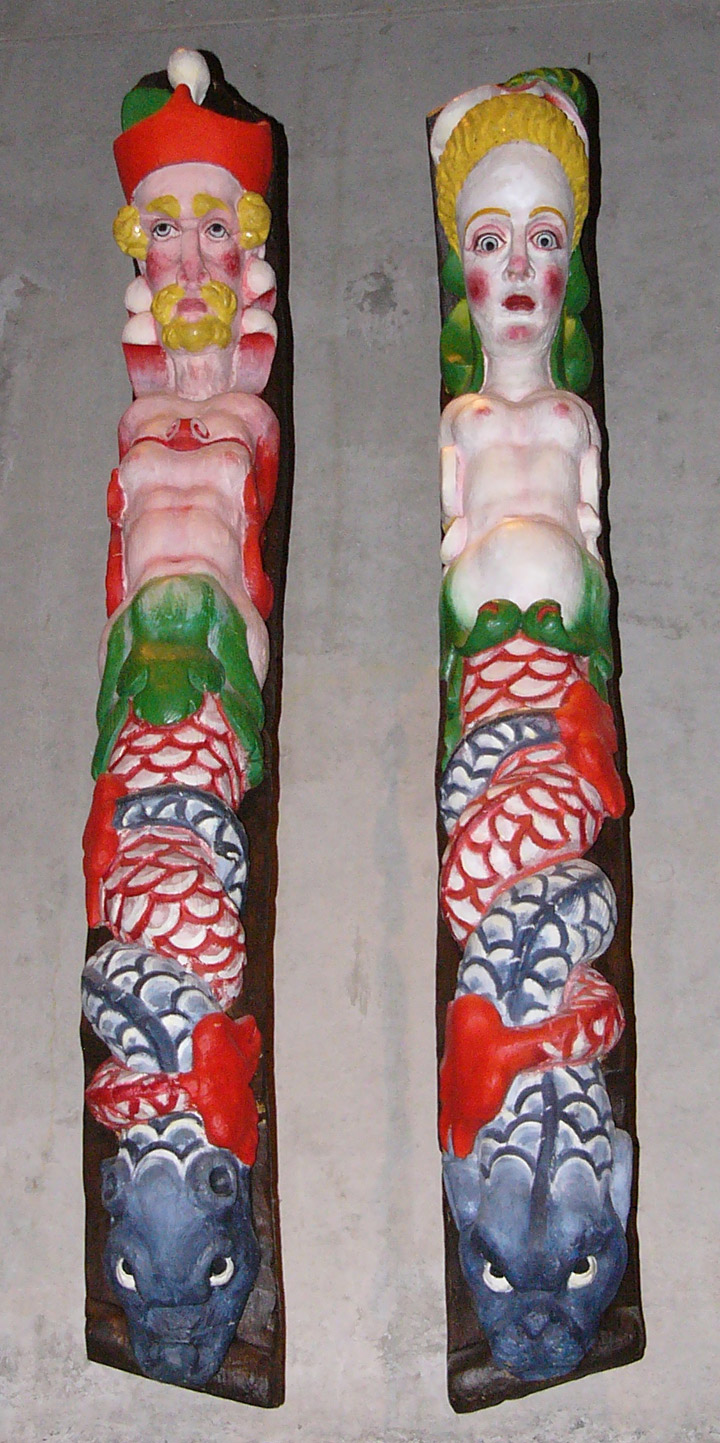
the carvings
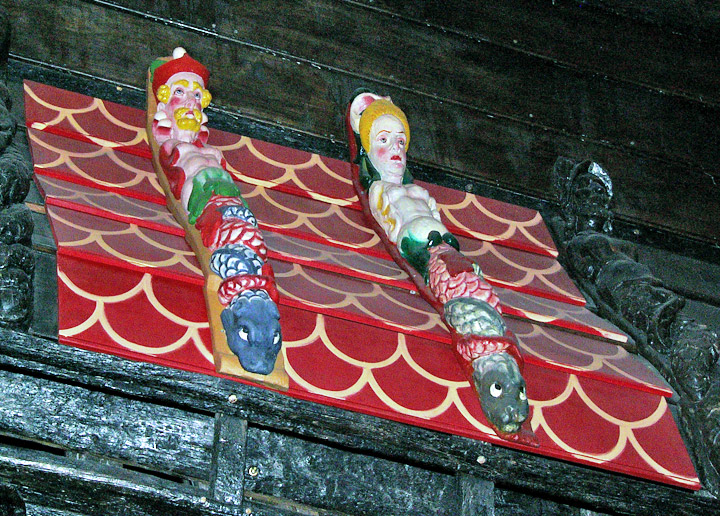
attached
Stern
ornaments (painted red, gold, blue) were carved gods, demons, kings, knights,
warriors, cherubs, mermaids, weird animal shapes – all meant to scare the
enemies and also symbolize power, courage and cruelty. The ship was painted in
colors of Baroque style.
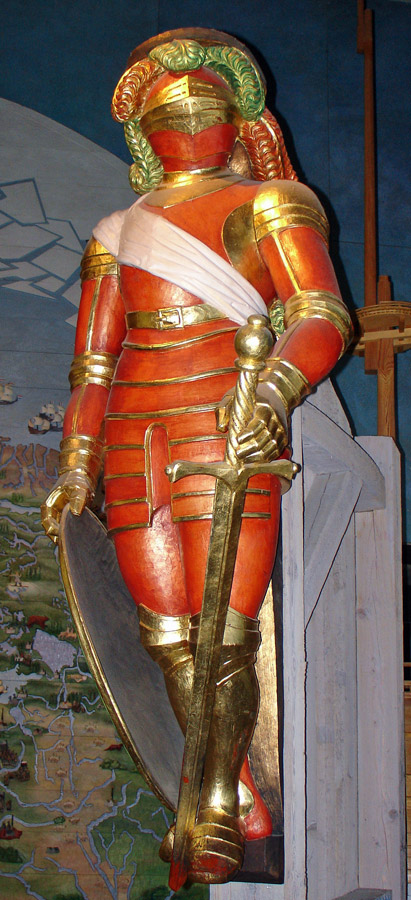
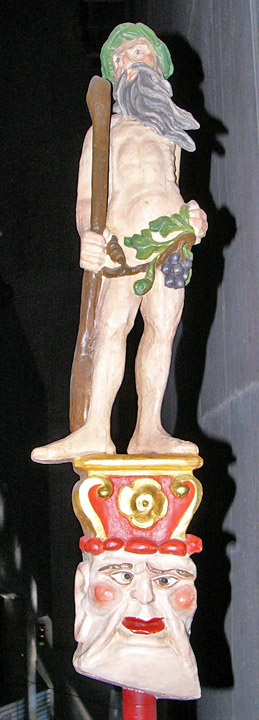
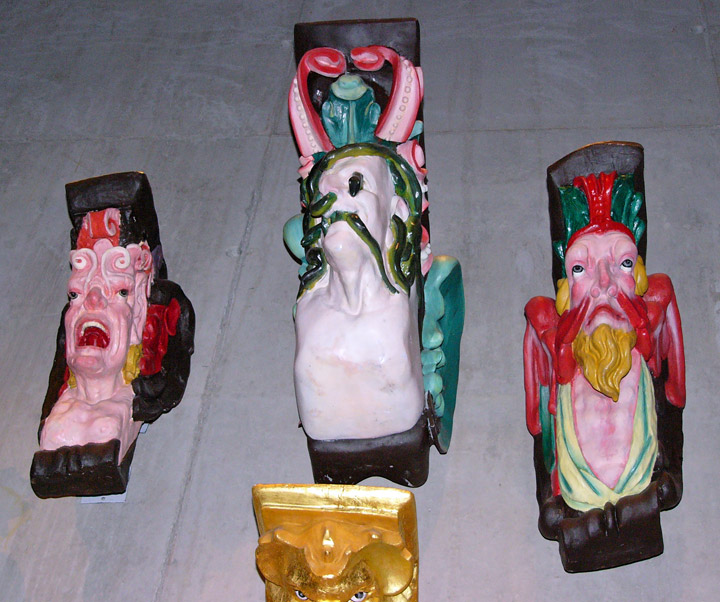
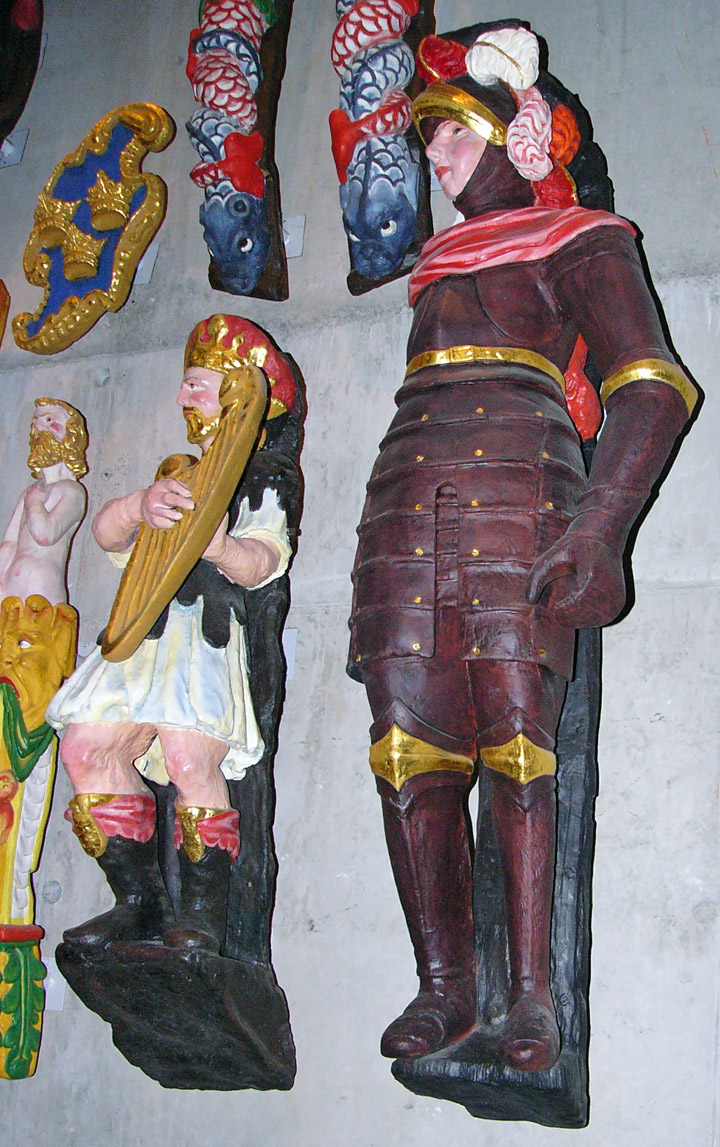
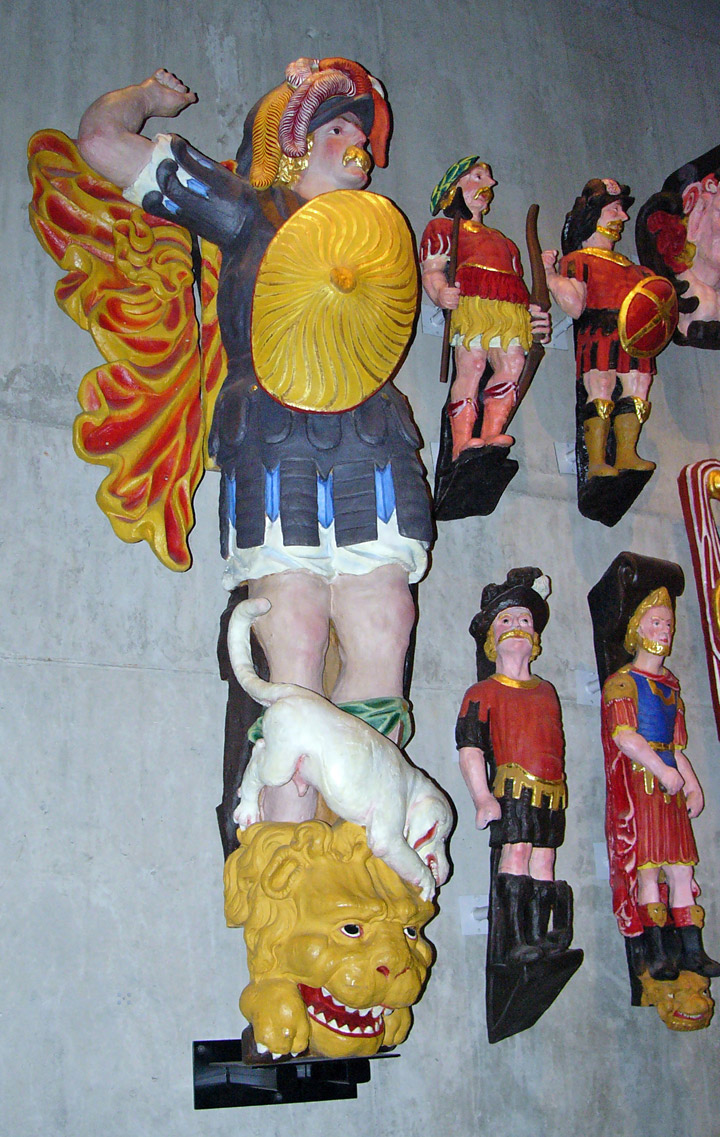
It took 3
steady years to build Vasa, turning her into a floating work of art and a weapon
of war.
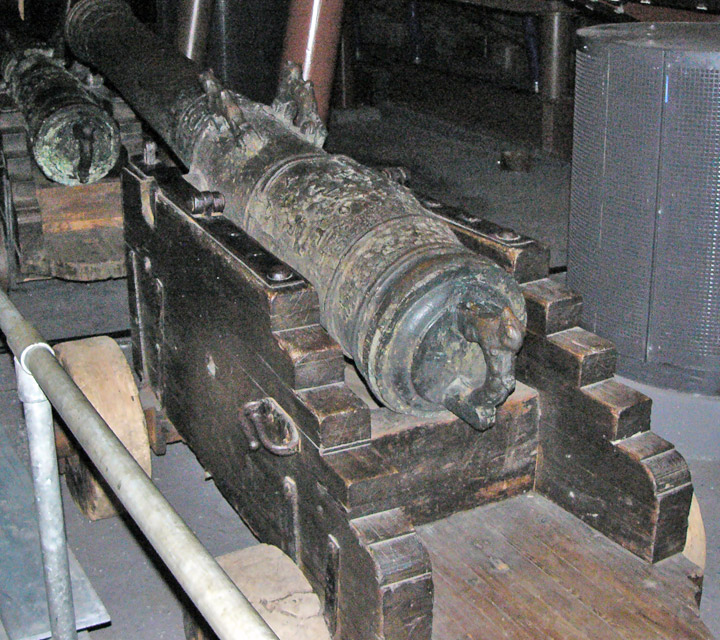
cannon

cannon carriage
Sweden had a
great copper mountain, so copper was the raw material used for making bronze
cannons. All in all, the king had 256 cannons made for 4 ships! As a rich,
powerful and mighty monarch, "His" cannons bore the moulded letters G.A.R.S. for
his Latinized name; Gustavus Adolphus Rex Sueciae. The cannons were heavily
reinforced at the breech and 64 weighed approximately 100 tons. Vasa's ballast
equalled 120 tons of stone. She carried additional weight of cannon balls,
gunpowder, ancillary firearms, food in casks, officers and a crew of 133
sailors.
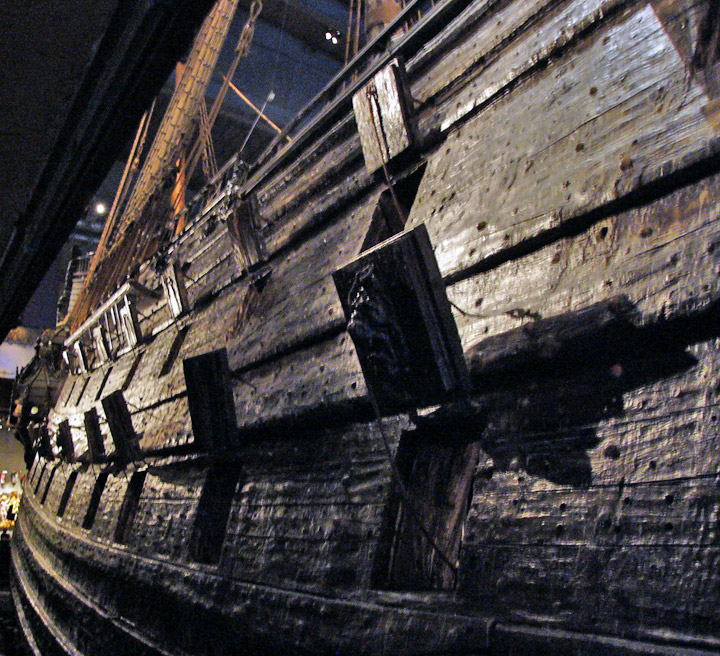
port side
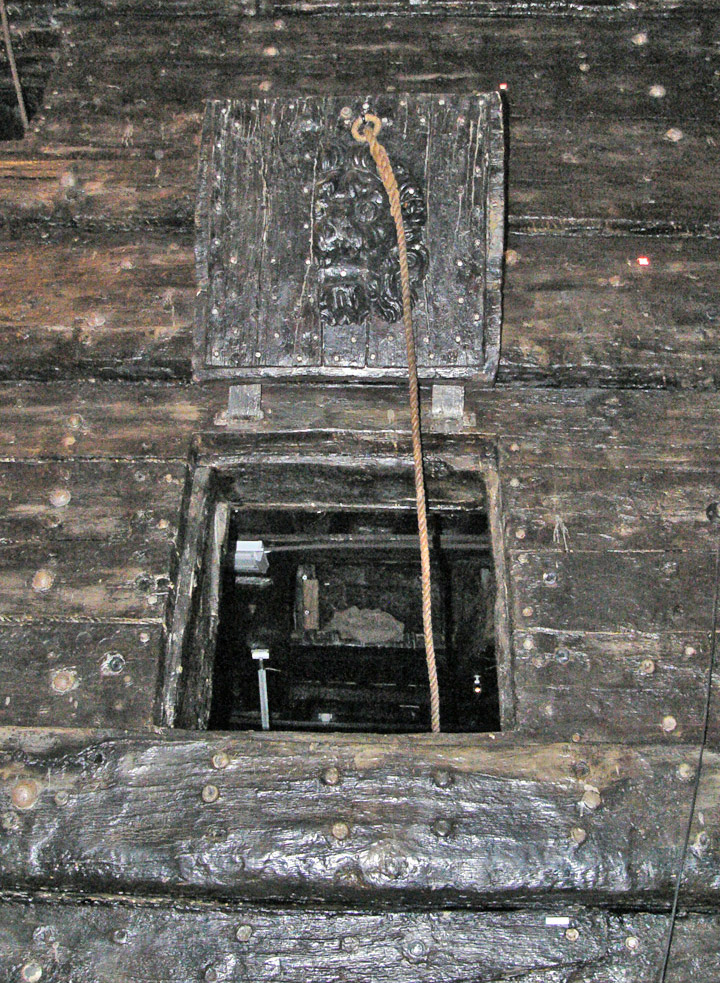
gun port
Vasa began
her maiden voyage August 10, 1628, as documented from the city ship quay (Skeppsbron),
and there was a light breeze from the southwest. She couldn't sail out right
away. Her sails were not up until Södermalm; the southern outskirts of the
harbor. She had only sailed for less than a nautical mile before capsizing.
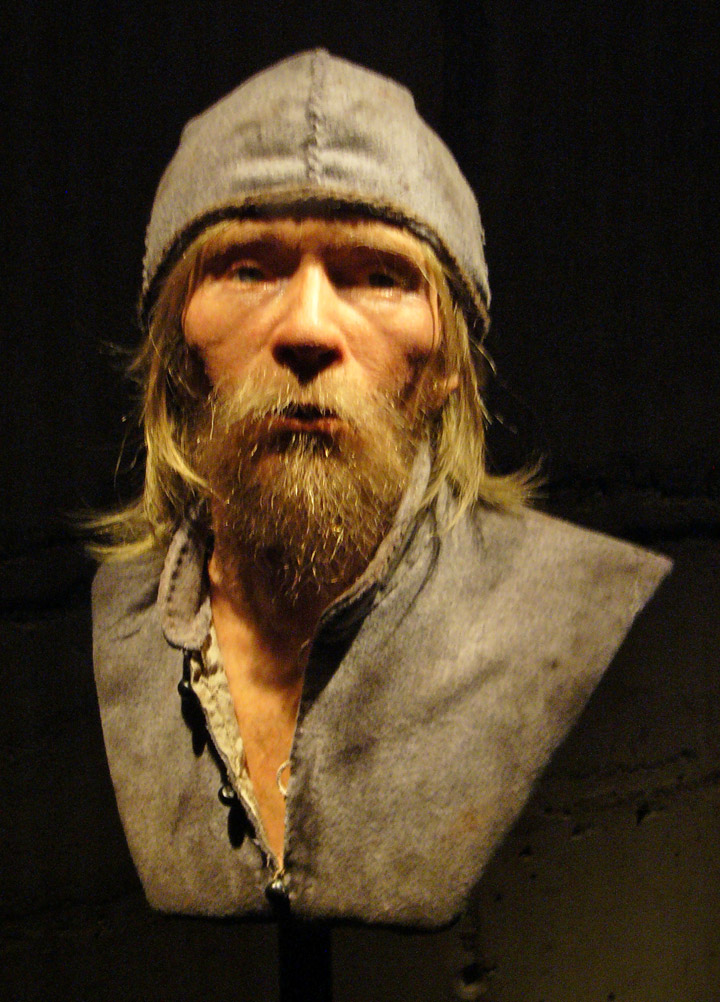
face of the steersman
(reconstructed from the bones found of him during restoration)
This is how
it happened. There was a sudden squall, her gun ports were still open having
just fired farewell, and when she listed heavily to port, the gun ports sank
below water level and water gushed in. It took only a few moments for her to
sink.
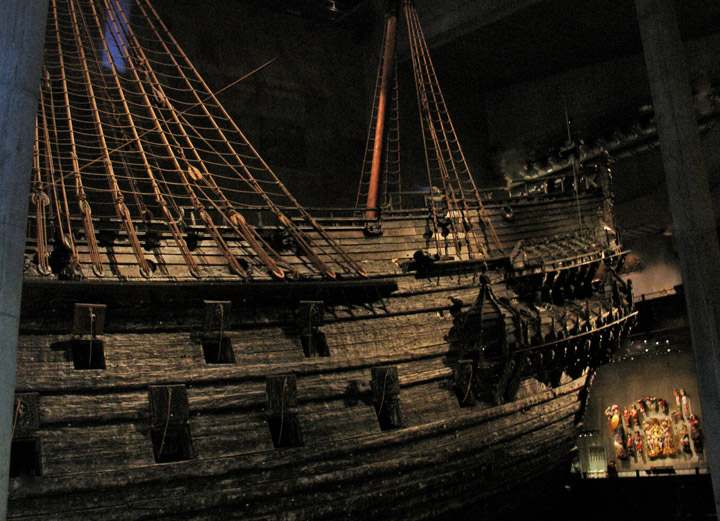
starboard side of the Vasa
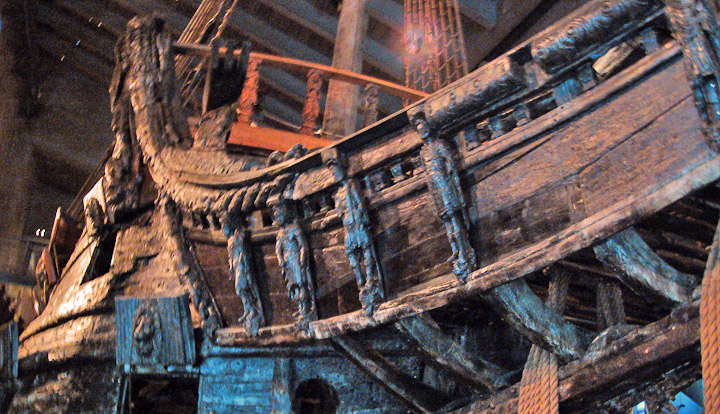
upper bow
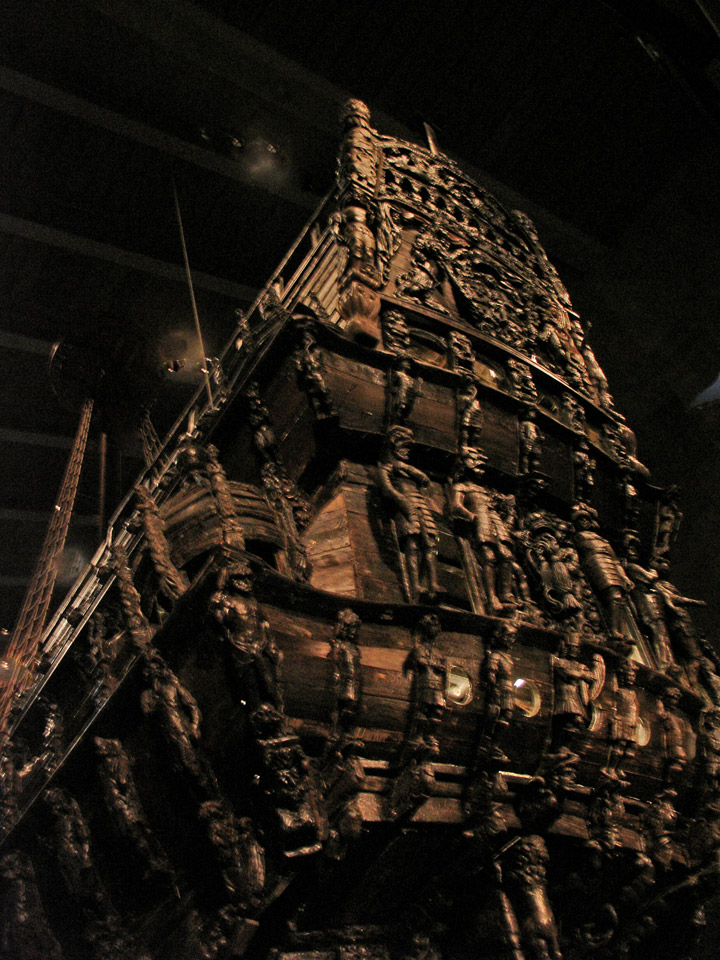
upper stern
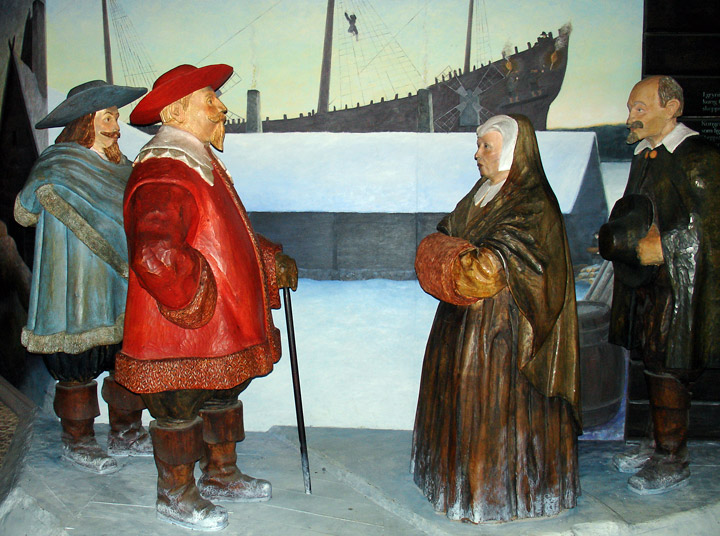
discussing who caused the problem
(since the person making the design
changes
which lead to insufficient ballast
was the King
no one was eventually convicted)
Return to Stockholm page





























People and
Places

























